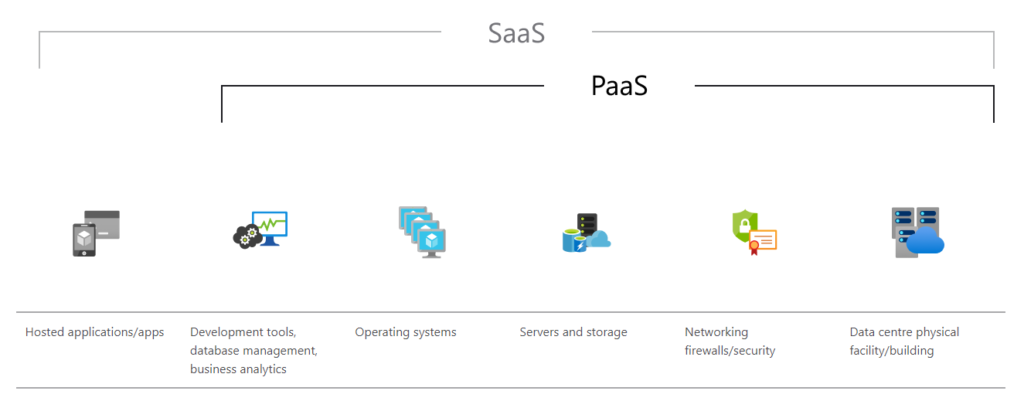Dispatching using a PaaS
Over the last decade most Courier and Final Mile companies have made the transition of moving their dispatching systems onto the cloud. This was done by either purchasing an off-the shelf Software as a Service (SaaS) System or by migrating their proprietary system onto the cloud.
But a lot has changed in the cloud.
First Traditional Clouds Limitations.
Traditional cloud-based dispatching systems, whether they are SaaS or proprietary, rely on purchasing and maintaining a few servers in one or two data centers. But that is very limiting.
A good example is security and certification. Smaller cloud-based systems as described above rely on small teams of 1 or 2 people keeping such a system secure. Rarely do such teams have the time and resources available to have their cloud system ISO or government certified. This limits their customer, you, on what services you can provide. Therefore limiting the number of contracts you can fulfil.
Speed of scalability is another great example of how traditional cloud can be limiting. The ability to quickly pivot is why so many companies have survived since March of 2020. Companies need the ability to quickly scale up…and down. Without having to wait for their SaaS provider or their IT Team to purchase, set up and implement a new server.
The final example is the ability of old cloud systems to keep up with technology and changes. Cloud is more than just storing data on multiple servers located off site. It should also include the middle layer of code that lies between the database and client. What we call the business logic of a system. Traditional cloud is very limiting in its business logic scope. For example, for SaaS providers to add Artificial Intelligence, they must create the framework from the ground up. This is very time consuming, expensive, and tedious.
What’s new with the Cloud
Move over SaaS, it is now all about Platform as a service (PaaS).
PaaS is a complete development and infrastructure environment in the cloud. With resources that enable the ability to deliver everything from simple apps to sophisticated enterprise applications. PaaS includes infrastructure – servers, storage and networking – and also middleware aka the business logic.

source: https://azure.microsoft.com/en-ca/overview/what-is-paas/
A good example of a PaaS is Amazon Web Services (AWS) or Microsoft’s Azure. I will use Azure to explain the benefits of having your dispatch system hosted on a PaaS.
Remember, as you read through this article, a modern SaaS Dispatching system can and should be built upon a modern PaaS system.
Security
When an existing dispatching system provider uses a system like Azure, they move away from a small one or two person team who oversee and maintain a few servers. They move to a much larger system overseen by thousands of highly skilled employees. Which uses millions of servers located all around the world.
For example, Microsoft’s Azure System has over 4 million servers located in 200 datacenters. Which is overseen by over 3,500 security experts who monitor and safeguard the system.
Certification
But what does that mean for you and your company?
Your dispatching system running on Azure’s platform provides your company with ISO and Government Certification. For example:
- For security, you have IS0 27001 Certification for Information Security Management Standards
- Are you delivering Healthcare shipments? HITRUSH, a certifiable framework to help healthcare organizations and their providers demonstrate their security and compliance in a consistent and streamlined manner.
- Or even better, HIPAA Certification. The Health Insurance Portability and Accountability Act of 1996 (HIPAA) and the regulations issued under HIPAA are a set of US healthcare laws that, among other provisions, establish requirements for the use, disclosure, and safeguarding of protected health information (PHI).
- For more security, you can have CIS Benchmarks which are configuration baselines and best practices for securely configuring a system
- More Azure certification can be found here: https://docs.microsoft.com/en-us/azure/compliance/
Beyond your own piece of mind, these certifications allow you to go to market with a dispatching system that is certified as secure, allowing you to close those more lucrative contracts. It also future proofs you for when, not if, these certifications become industry standard.
For security, PaaS means that the older cloud system running your current dispatch system is replaced with customized hardware that has security controls integrated into the hardware and firmware components with added protections against threats such as DDoS.
And it has next level security with A.I. monitoring actionable insights by analyzing vast sources of data including 18 billion Bing web pages, 400 billion emails, 1 billion Windows device updates and 450 billion monthly authentications.
Speed of Scalability
For scalability, PaaS’s massive number of servers and datacenters mean with a few keystrokes your dispatching system can quickly pivot as fast as your business needs.
Even better, this upgrade can happen in an automated fashion.
Imagine it’s the holiday season and the sheer number of shipments you must deliver grows exponentially. You are too busy scrambling for drivers and trucks to worry if your dispatching system can handle the extra volume. The good news is that a PaaS, like Azure, can see the extra load and will just upgrade you onto a more powerful system automatically.
Business Logic
The final and most important piece is PaaS allows your dispatching system to not only keep up with changes in technology but makes you a leader. A PaaS like Azure provides a prebuilt ecosystem for Artificial Intelligence and Machine Learning. If you want an AI system that can help with dispatching, it is faster, easier and more powerful to create this for your dispatching software on a system like Azure.
Now is the time to ask your existing dispatch system providers if they use their own cloud-based system or do they operate using a PaaS system like Microsoft’s Azure. It will help you pivot, stay secure and keep up with needed technology.